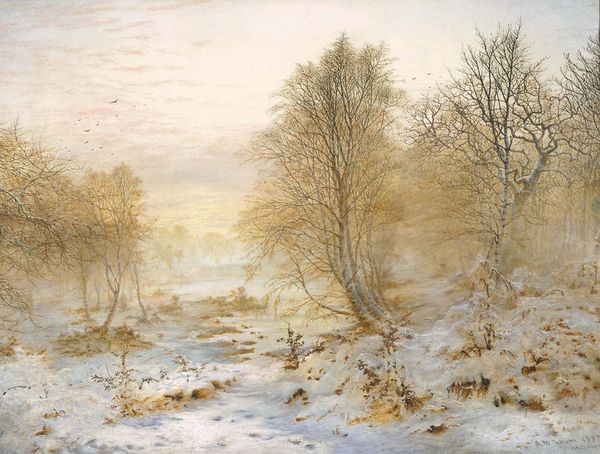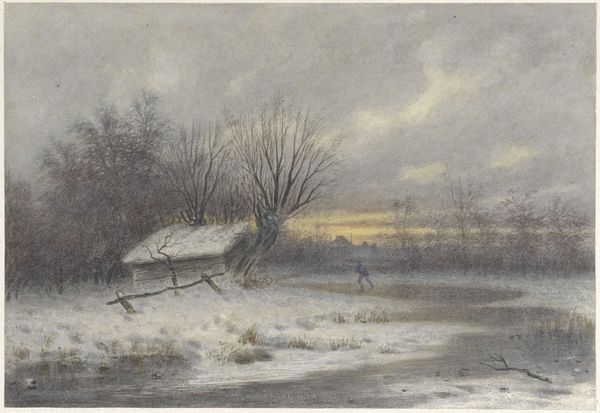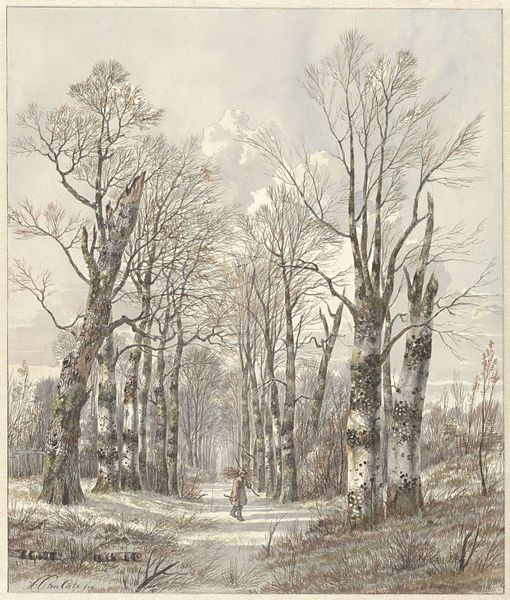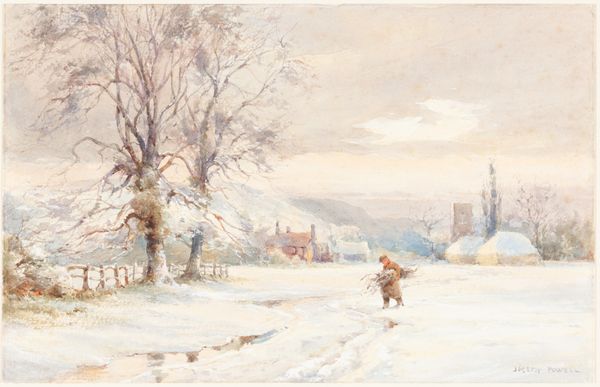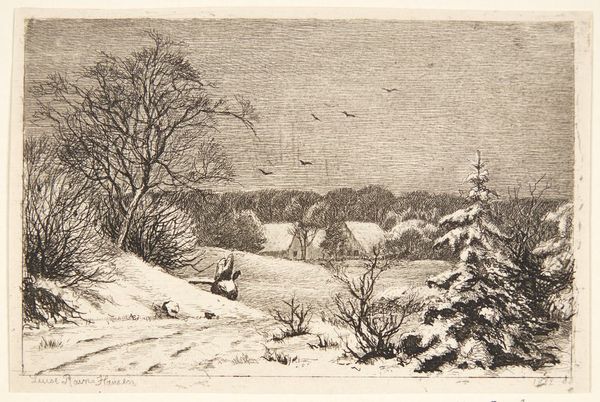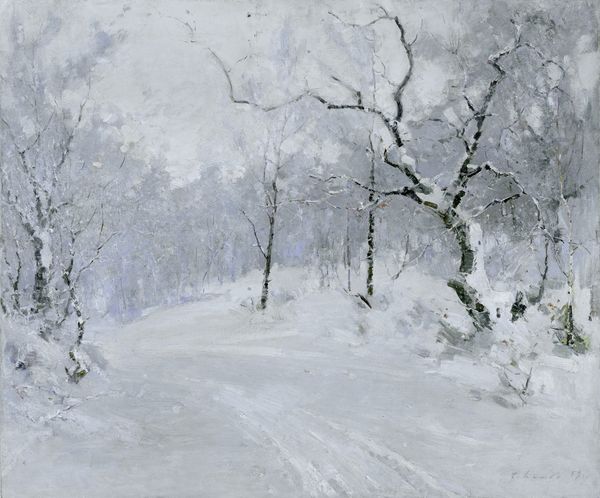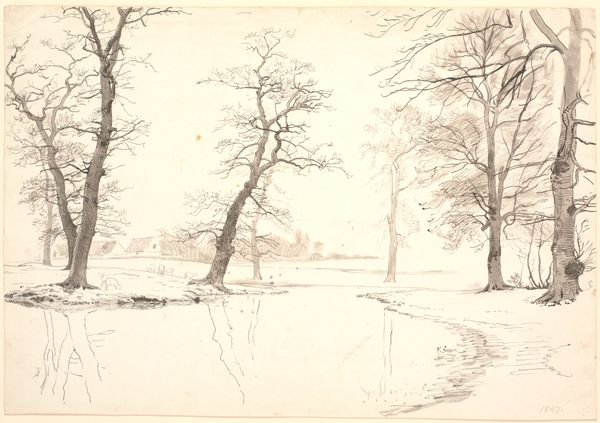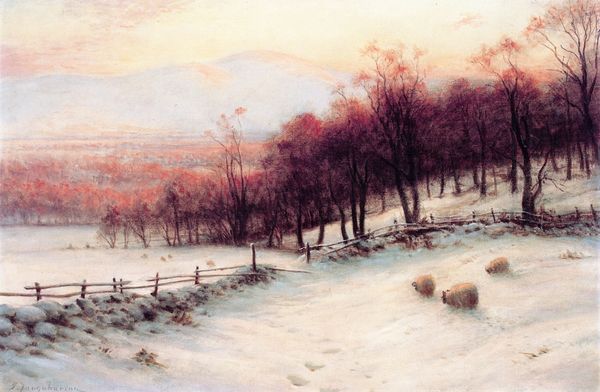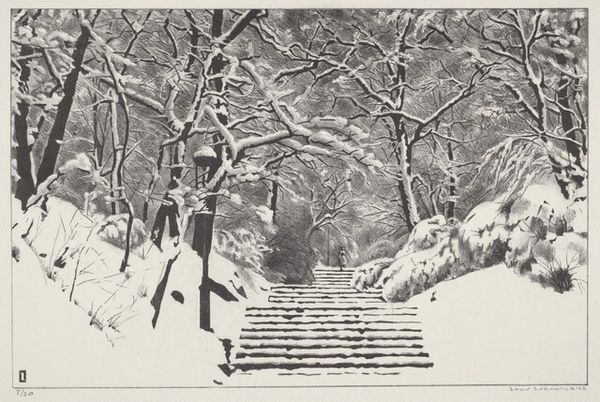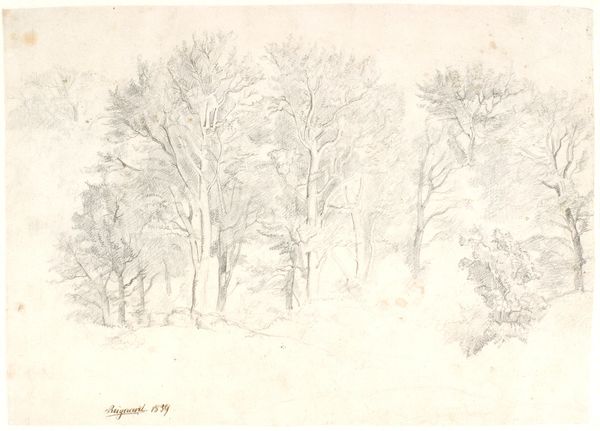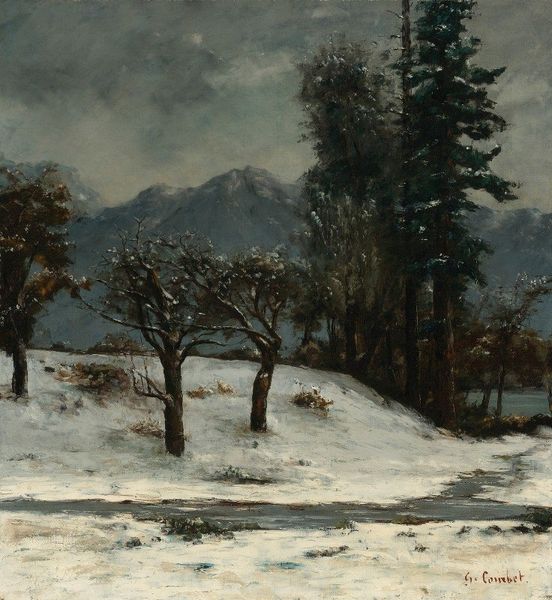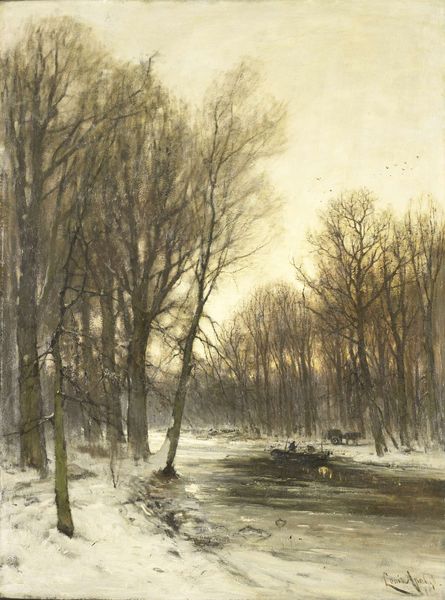
watercolor
#
snow
#
impressionism
#
landscape
#
nature
#
watercolor
#
forest
#
watercolour illustration
#
watercolor
#
realism
Dimensions: height 348 mm, width 502 mm
Copyright: Rijks Museum: Open Domain
Curator: This watercolor, known as "Winterlandschap," was completed in 1888 by Jan Daniël Cornelis Carel Willem baron de Constant Rebecque. Editor: A hush falls over me when I view this painting. It is serene but also desolate, almost unnervingly quiet. Curator: The masterful handling of the watercolor medium allows the baron to depict the subtle gradations of light on snow, truly capturing a winter day's unique atmosphere. Observe how he employs layering techniques to suggest depth and texture in the forest. Editor: It feels so much colder just looking at it. Winter landscapes are rarely just pretty scenes, they reflect the realities of the marginalized. Do these muted colors hint at a socioeconomic reality, the vulnerability to climate, the necessity for shelter and community against the elements? Who do you imagine inhabited that small structure at the vanishing point? Curator: From a formal perspective, I see how the artist created a powerful compositional structure. The diagonal recession, balanced asymmetrical arrangement of trees, and the horizon line contribute to the impression of distance and, of course, scale. Notice, too, how the limited color palette enhances the overall sense of unity and harmony within the work. Editor: That cottage beckons... the barren trees could signify lives put on hold by hardship and socioeconomic disparities prevalent across 19th century agrarian societies in Europe. Was it a family's only retreat from weather and class struggle, I wonder? Or even a lonely metaphor of isolation and displacement of populations caused by evolving rural economies at that time? Curator: While it might be possible to analyze it sociologically, its real value comes from the artist's acute observation of light, shade, and textural subtlety. Editor: Understanding art demands that we think critically about both aesthetic choices *and* historical moments. Both converge in the making, reading, and lived experience of art. The aesthetic is almost *always* ideological. Curator: Perhaps, yet the inherent value still comes from understanding technical craft. Still, both approaches enable viewers to form richer engagements, I suppose. Editor: A beautiful thing, for sure.
Comments
No comments
Be the first to comment and join the conversation on the ultimate creative platform.
